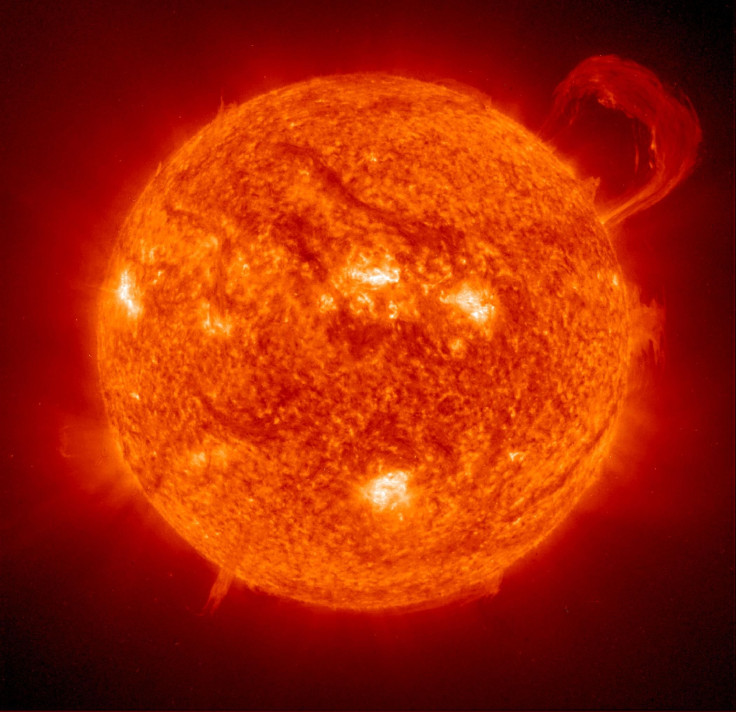Watch: NASA Reveals What Solar Eruptions Look Like in 3D

The sun is a gigantic orb of immense energy, some of which is constantly expelled from its surface in the form of massive eruptions. These explosions, called coronal mass ejections (CMEs), can sometimes contain a billion tons of matter, which has enough power to potentially wipe out all man-made technology, if it hits Earth. Scientists used data from three NASA satellites to recreate a 3D view of these massive explosions that occur on the surface of the sun.
According to NASA, these explosions propagate a wave of high-energy particles that are also capable of impacting space weather event around the Earth, including endangering spacecraft and astronauts. Researchers developed models to understand how shocks linked with CMEs are propagated.
The scientists created two models to better understand the nature of these CME-associated shocks. While one model was dubbed the “croissant” model and focused on uncovering the shape of nascent shocks; the other dubbed “ellipsoid” focused on identifying the shape of expanding shocks.
“Understanding a shock’s structure — particularly how it develops and accelerates — is key to predicting how it might disrupt near-Earth space. But without a vast array of sensors scattered through space, these things are impossible to measure directly,” NASA said in a statement. “Instead, scientists rely upon models that use satellite observations of the CME to simulate the ensuing shock’s behavior. ”
Scientists combined data from three of NASA’s satellites — the twin Solar Terrestrial Relations Observatory (STEREO) and NASA/ESA’s Solar and Heliospheric Observatory (SOHO). This allowed the researchers to gather data on two separate eruptions — one that exploded in March 2011 and another in February 2014.
The data gathered from the three satellites was applied to the two models to “uncover the 3-D structure and trajectory of each CME and shock."
“Each spacecraft’s observations alone weren’t sufficient to model the shocks. But with three sets of eyes on the eruption, each of them spaced nearly evenly around the Sun, the scientists could use their models to recreate a 3-D view,” the statement said. “Their work confirmed long-held theoretical predictions of a strong shock near the CME nose and a weaker shock at the sides. ”
The 3D model allowed scientists to recreate the shocks’ journey through space, as they were propelled away from the sun. The model also allowed researchers, for the first time, to gain more insight into the density of plasma surrounding the shock. The information obtained by the researchers will help them better assess the potential danger CMEs can pose to astronauts and spacecraft.
The findings of the new research were published in the Journal of Space Weather and Space Climate.
© Copyright IBTimes 2025. All rights reserved.





















